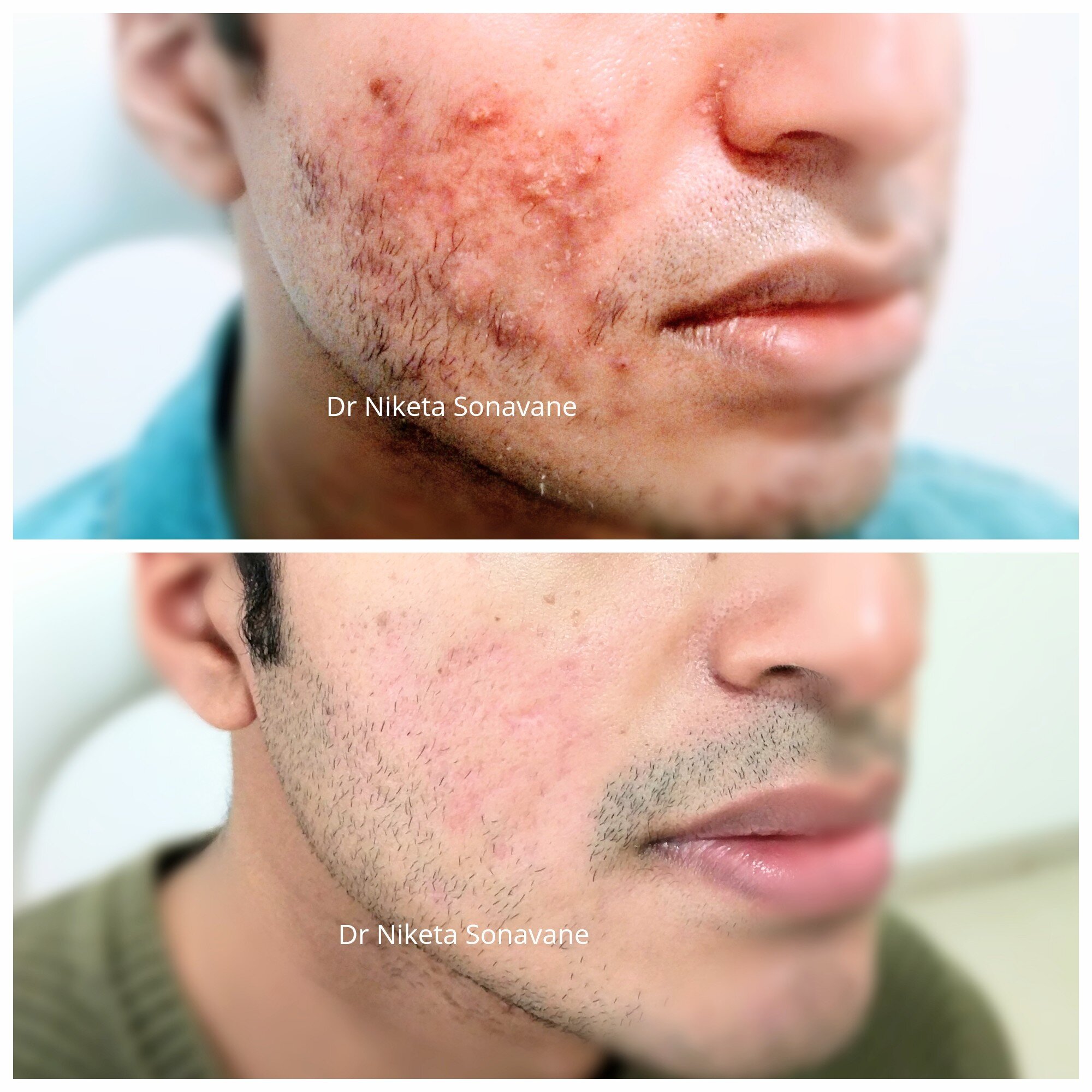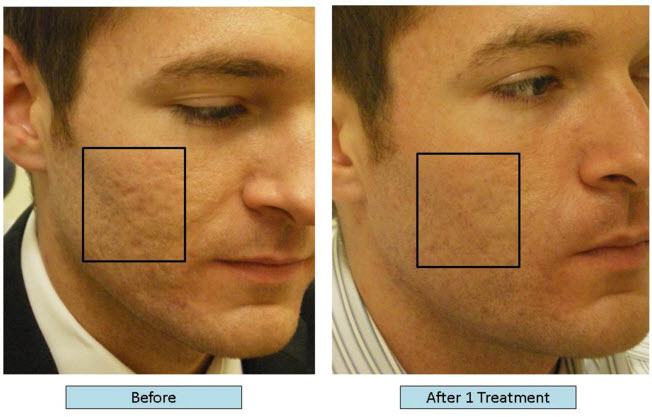Recognizing the Various Skin Disease and Efficient Treatment Choices for Acne Scars
Acne marks represent an intricate interplay of skin problem that substantially impact individuals' self-worth and overall skin health and wellness. Comprehending the unique kinds of acne marks-- atrophic and hypertrophic-- along with their underlying reasons, is critical for establishing effective therapy approaches. Various healing choices exist, varying from innovative dermatological procedures to all-natural solutions. Nevertheless, the effectiveness of these therapies often depends upon personalized assessments by qualified professionals. As we discover the landscape of acne mark administration, it ends up being apparent that the trip toward clearer skin may include more than just topical remedies.
Kinds of Acne Scars

On the other hand, hypertrophic scars arise from an overproduction of collagen during the healing process, resulting in elevated areas on the skin. These marks are frequently firm and can differ in shade, sometimes showing up red or darker than the surrounding skin.
Comprehending these sorts of acne scars is vital for developing an efficient treatment plan - acne scars. Options might consist of chemical peels, laser treatment, microneedling, or facial fillers, tailored to the particular mark kind. A thorough appointment with a dermatologist can assist establish one of the most appropriate intervention, taking into consideration the individual's skin kind, mark extent, and total skin wellness
Reasons For Acne Scarring
Scarring happens as a result of the body's natural healing response to swelling and injury triggered by acne sores. When acne kinds, it activates an inflammatory feedback, leading to the release of various cytokines and growth factors that promote healing. Nevertheless, this process can in some cases result in excessive cells formation or insufficient fixing, causing marks.
The main reasons for acne scarring include the seriousness of the acne itself, period of the lesions, and specific skin kinds. Serious inflammatory acne, such as nodules and cysts, is more likely to lead to scarring due to much deeper tissue damage. Furthermore, inappropriate handling of acne lesions, such as pressing or picking, can worsen tissue injury and swelling, raising the probability of scarring.
Genetic proneness additionally plays a substantial function; individuals with a family members history of scarring go to a higher risk. Skin kind and shade can influence mark formation, as darker skin tones might experience post-inflammatory hyperpigmentation, while lighter skin may create atrophic marks.
Ultimately, recognizing these causes is important in managing acne and mitigating the possibility for scarring.

Treatment Options for Scarring
Reliable treatment options for acne scarring vary relying on the kind and seriousness of the scars. Usually categorized right into atrophic, hypertrophic, and keloid marks, these problems need customized strategies for ideal results.
For atrophic scars, which are identified by a loss of tissue, therapies such as chemical peels, microdermabrasion, and laser therapy are typically employed. These approaches promote skin revival and promote collagen production, consequently enhancing skin appearance. Subcision, a minimally invasive treatment, can likewise work by breaking up fibrous bands under the skin.
Keloid and hypertrophic scars can be extra challenging to treat. Alternatives consist of corticosteroid shots to reduce inflammation and flatten the scars. Sometimes, cryotherapy or laser therapy may be advised to lessen their appearance.
Surgical choices are available for severe scarring, where excision or skin grafting may be essential. It's necessary for individuals to seek advice from with a dermatologist to examine their particular mark type and talk browse this site about one of the most suitable treatment strategy. Integrating numerous therapies commonly generates the very best results, making sure that each person's unique skin disease is addressed efficiently.
Natural Home Remedy and Natural Solutions
All-natural remedies and natural remedy can offer an obtainable approach for people looking for to improve the appearance of acne scars (acne and acne scars treatment). Different ingredients discovered in the home kitchen area have actually shown possible advantages in improving skin texture and promoting healing

Another reliable choice is lemon juice, which serves as look at this website a natural exfoliant and can lighten hyperpigmentation. Nonetheless, it must be used cautiously, as it might cause photosensitivity. Oat meal masks are also useful; their mild exfoliation can aid eliminate dead skin cells while soothing inflammation.
Vital oils, such as tea tree oil and lavender oil, can even more sustain scar recovery due to their antimicrobial residential or commercial properties. It is critical to carry out a spot test prior to using any solution to make certain there are no damaging reactions. These all-natural solutions can be a complementary strategy in the trip to decrease acne marks.
Stopping Future Scarring
Taking on a proactive technique to skincare can significantly lower the risk of developing future acne marks. One of the crucial methods is to take care of acne efficiently as it occurs. This entails using non-comedogenic skincare items and medicines suggested by skin doctors that target acne without irritating the skin. Regular cleansing, exfoliation, and hydration can help maintain skin health and wellness and avoid clogged pores.
In addition, preventing the temptation to pick or press acne sores is important, as this can result in inflammation and subsequent scarring. Rather, individuals must concentrate on applying topical treatments that advertise recovery and reduce inflammation. Components such as salicylic acid, benzoyl peroxide, and retinoids are recognized for their efficiency in handling acne and minimizing scars.
Sun protection is another essential part; direct exposure to UV rays can darken scars and hinder recovery. For that reason, using a broad-spectrum sun block daily can minimize these results - acne scars.
Last but not least, keeping a healthy and balanced diet regimen abundant in antioxidants and remaining moisturized supports skin regeneration. By applying these safety nets, individuals can dramatically decrease their risk of future scarring and advertise general skin health and wellness.
Final Thought
In verdict, a thorough understanding of acne scars, incorporating both atrophic and hypertrophic kinds, is necessary for efficient therapy strategies. Consultation with a skin specialist continues to be vital to devise tailored strategies that why not try here take into consideration private skin kinds and scar intensity, inevitably boosting the efficacy of mark management methods.
Acne marks stand for a complex interaction of skin conditions that dramatically impact people' self-esteem and general skin wellness. The 2 key classifications of acne scars are atrophic and hypertrophic scars. These marks are further categorized right into 3 subtypes: ice pick marks, which are slim and deep; boxcar marks, which are broader and have well-defined edges; and rolling marks, which develop a wave-like appearance due to uneven skin appearance.
A thorough examination with a skin doctor can help establish the most proper intervention, taking into account the person's skin kind, scar seriousness, and overall skin wellness.
Consultation with a dermatologist stays vital to create individualized techniques that think about private skin kinds and scar extent, ultimately enhancing the effectiveness of scar monitoring strategies.